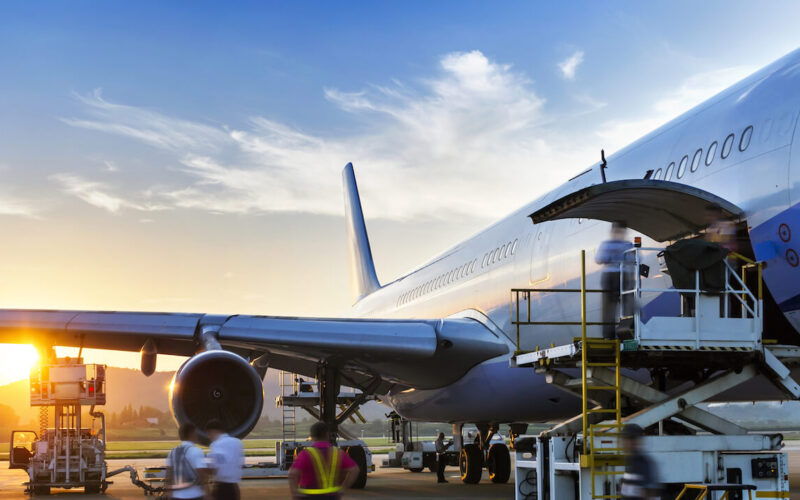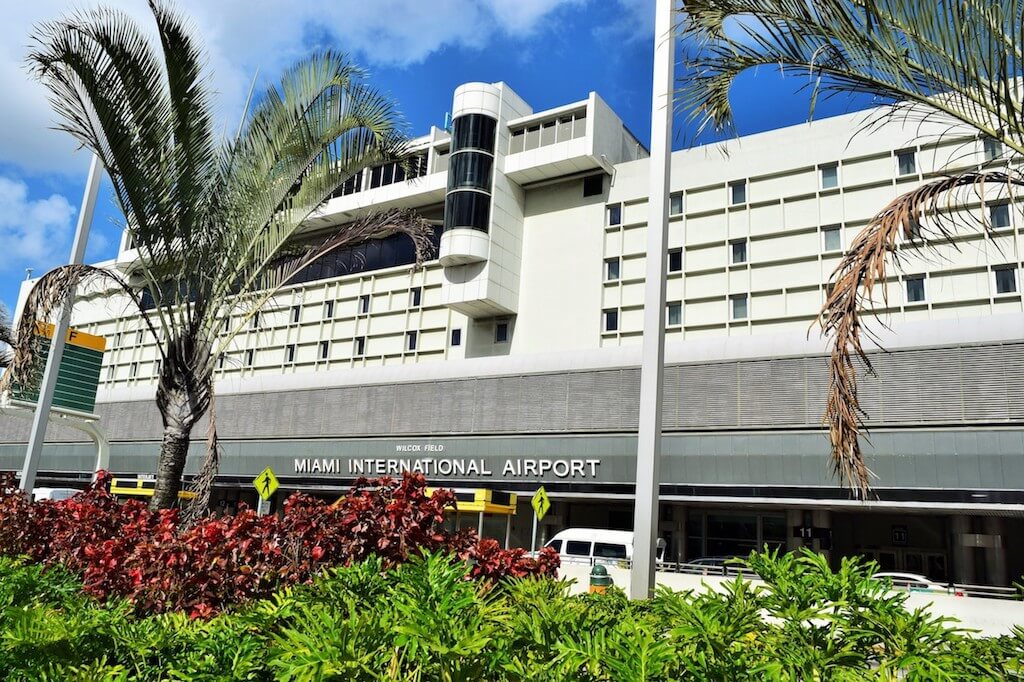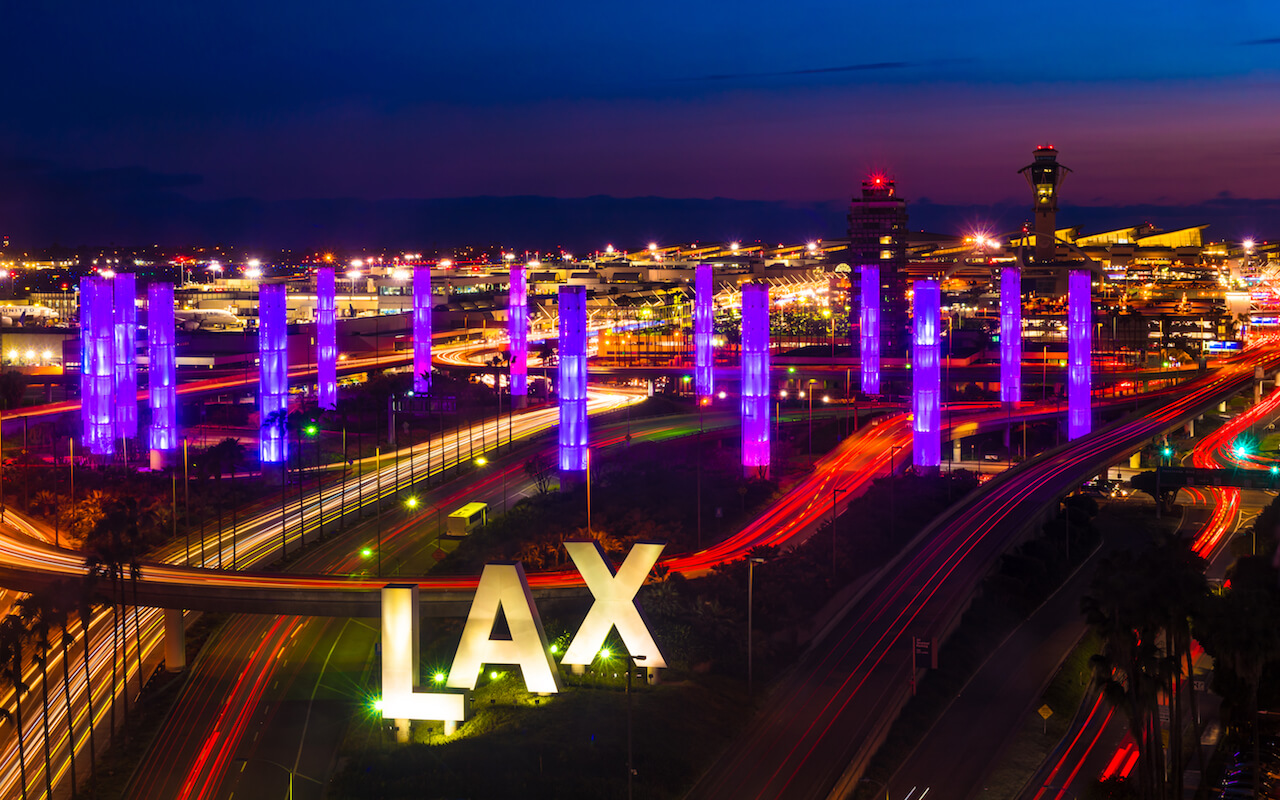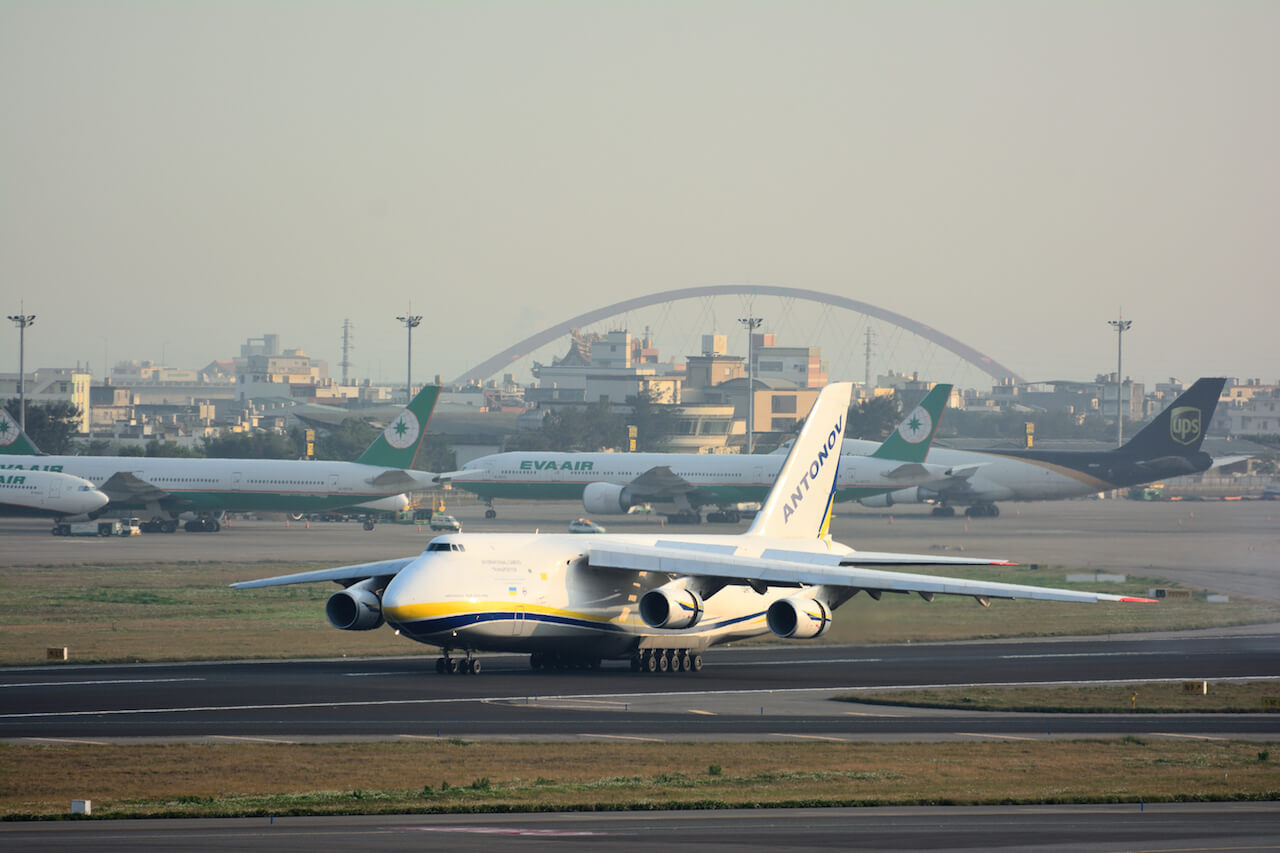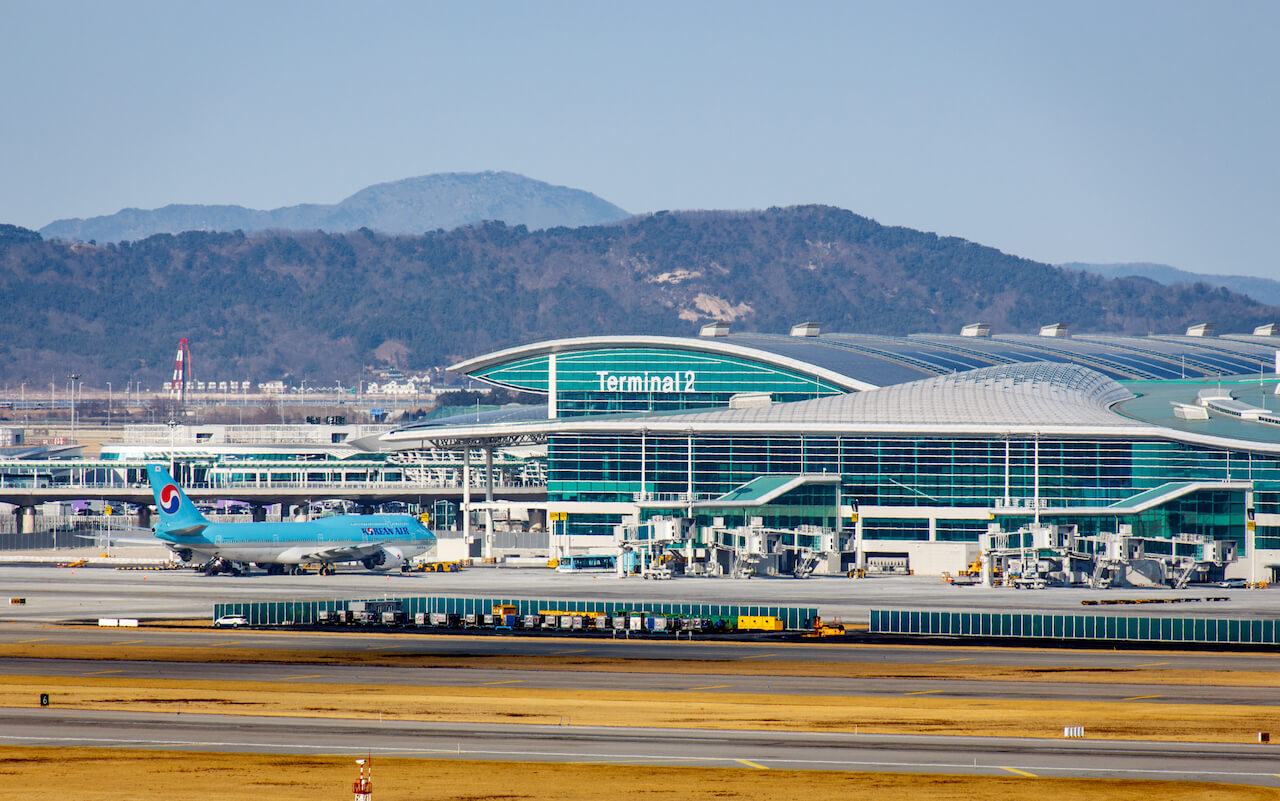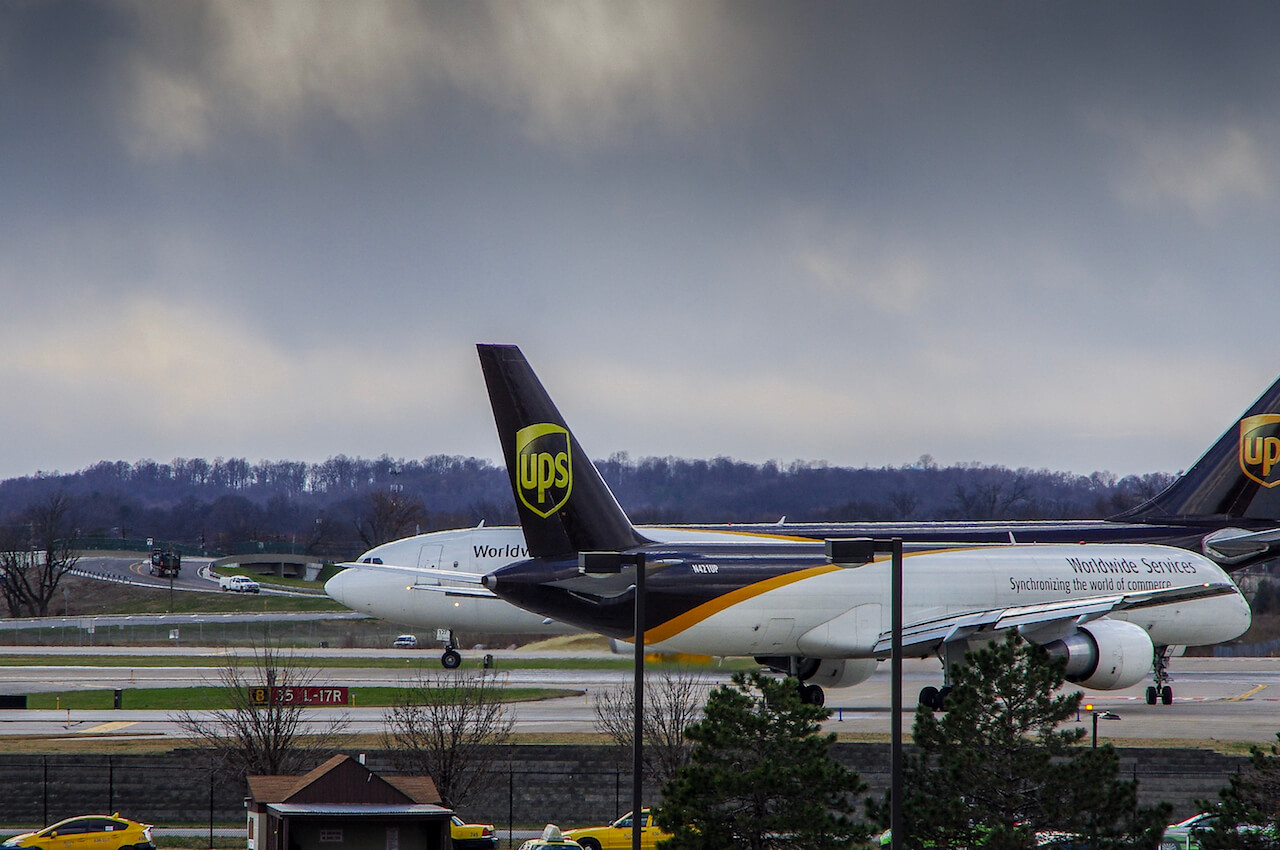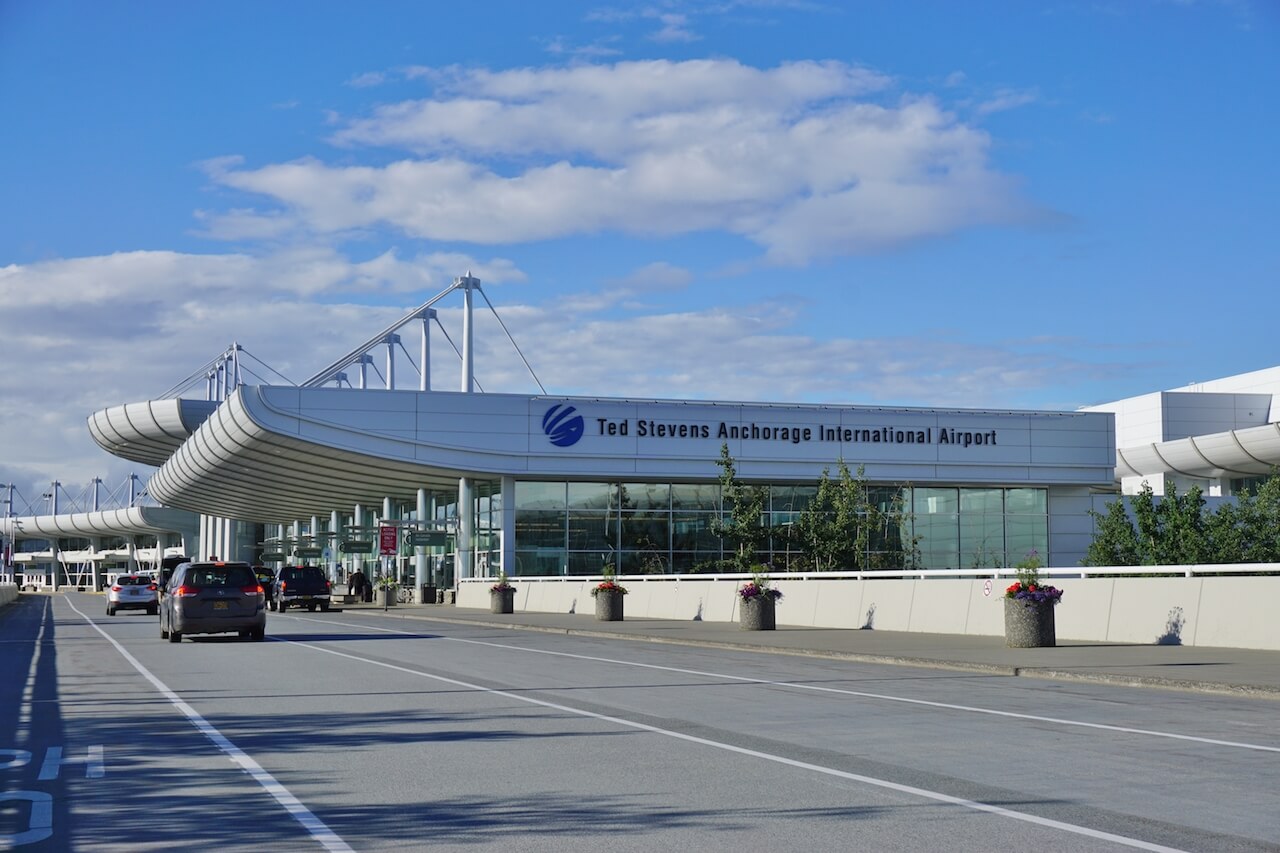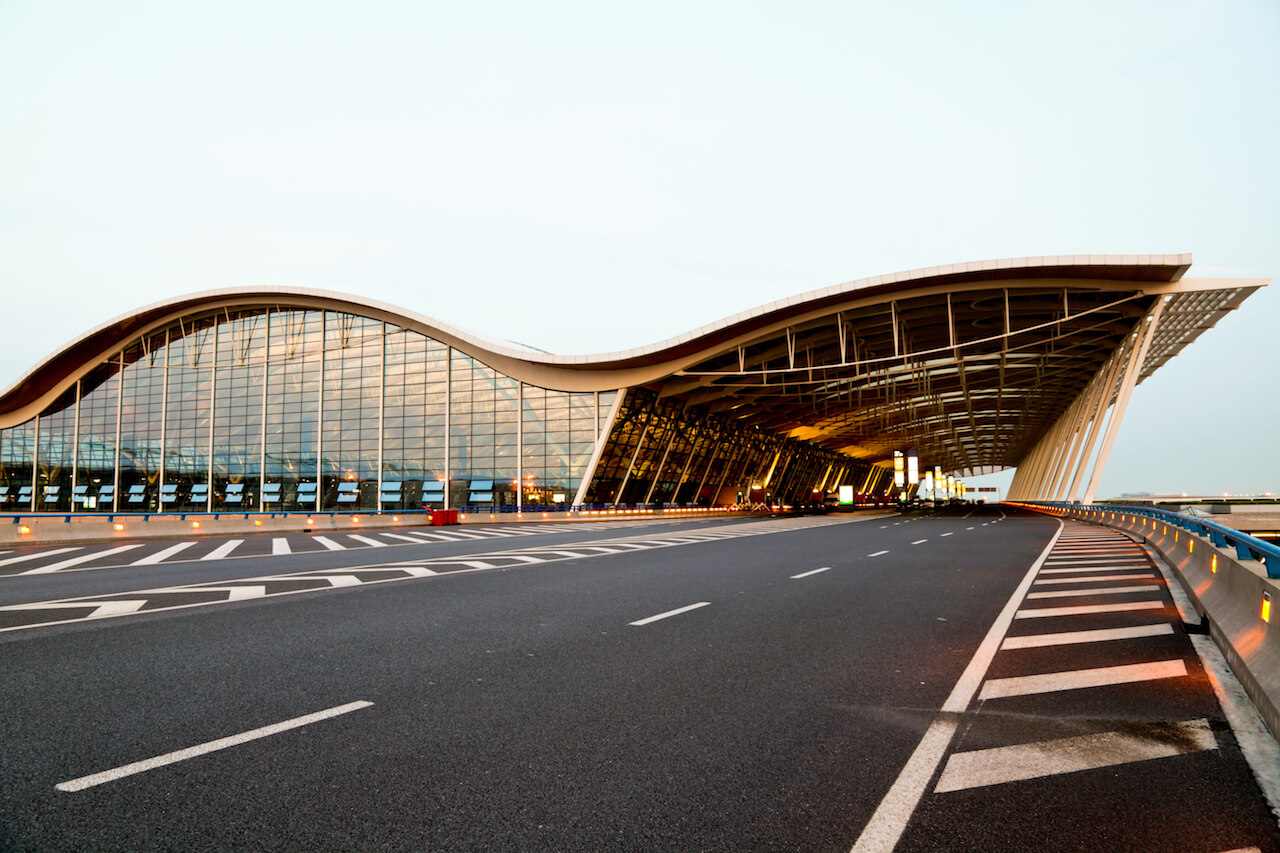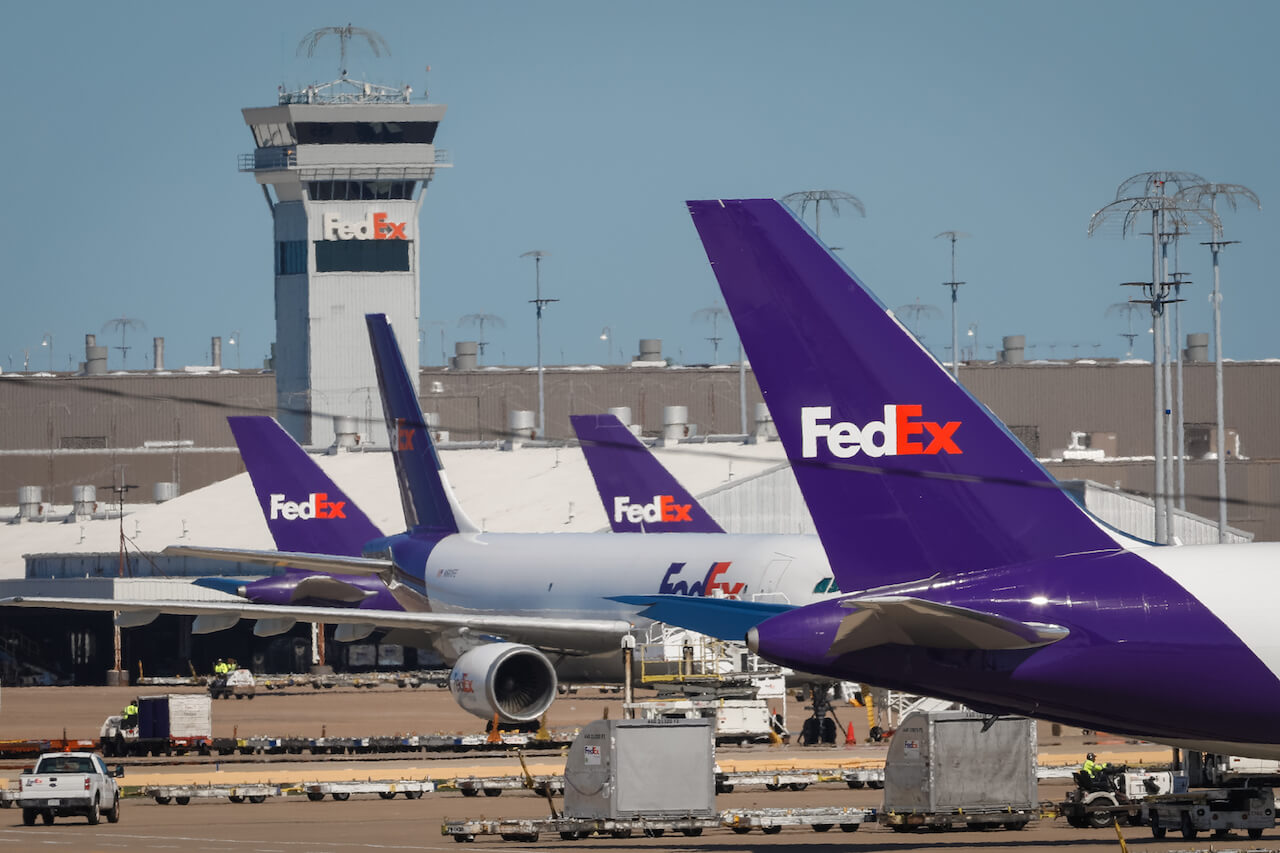While we may have gone through the pandemic without air travel, we could not have survived without the global air cargo sector. Vaccines, PPE (Personal Protective Equipment), masks and medical supplies are just some of the essential items that, owing to air cargo transport, we have still been able to secure during a time of global crisis.
Not only has the industry provided us with access to various daily essentials, but we have also been able to shop online from overseas, which was equally necessary in keeping our sanity intact during such turbulent times.
So, it’s no surprise that despite air passenger travel going down by 60 % in 2020 due to the pandemic, air cargo demand has actually increased by 9% compared to pre-pandemic levels.
September marks Cargo Month at AeroTime. So, our team has decided to investigate which cargo airports have been the busiest.
The official list of the busiest cargo airports in 2021 will not be released until early 2022. So, we’re looking back at 2020 and analyzing the factors for each entrant. The following list is based on figures from Airports Council International (ACI) and displays the Top 10 airports in order of cargo and mail handled in metric tonnes.
10. Miami International Airport (MIA)
2019 air cargo total – 2,092,472
2020 air cargo total – 2,137,699
changed by: + 2.2%
We begin our list with a newcomer. For the past decade, securing a Top 10 spot has been within reach for Miami International Airport (MIA), but the airport has continued to rank somewhere between 10-15.
But 2020 was a game-changer for MIA Cargo and volume rose by 3%. The total cargo flights for MIA, including arrivals and departures, reached a record of 59,000.
“It makes sense that Miami would have a good year. Early on in the pandemic, we saw a shift of cargo capacity to cargo aircraft. With a lot of freighter operators in Miami more than any other airport in the western world, we benefitted,” Emir Pineda, MIA trade and logistics manager told Forbes in early 2021.
In 2020, MIA Cargo saw an increase in e-commerce goods and pharmaceutical supplies, which included vaccines, alongside MIA Cargo’s staple items such as flowers, fresh produce, and other perishables imported from Latin America.
MIA Cargo Hub handles 79% of all air imports and 74% of all exports from the Latin American and the Caribbean region. With over 100 airlines operating year-round with two-way cargo traffic, Miami International Airport connects the Americas to high-growth markets in Asia, Europe, the Middle East and beyond.
9. Doha International Airport (DOH)
2019 air cargo total – 2,215,804
2020 air cargo total – 2,175,292
Changed by: -1.8%
Despite dropping one place since 2019, Doha International Airport (DOH) in Qatar has still managed to secure a slot in our Top 10.
With the capacity to process 1.4 million tonnes of cargo per year, DOH Cargo hub boasts one of the most sophisticated cargo terminals in the industry. It is also a hub to Qatar Airways, the world’s third largest international cargo carrier after FedEx Express and UPS Airlines.
Flexible to changing and growing markets, DOH Cargo recently introduced QR Pharma and Perishables, a new facility dedicated to handling more sensitive commodities. DOH also plans to increase its overall cargo capacity by 75 % and expects to handle 1.4 million tonnes of shipment annually from this new facility alone.
DOH only entered the Top 10 in 2019. However, the airport did appear in the Top 25 every year since its cargo terminal commenced operation in 2013. A rather impressive feat for a terminal that is less than 10 years old.
8. Los Angeles International Airport (LAX)
2019 air cargo total – 2,093,003
2020 air cargo total – 2,229,476
Changed by: +6.6%
Los Angeles is the gateway for international trade between North America and Asia Pacific, so it comes as no surprise that LAX Cargo continues to rank highly each year.
However, 2020 saw a whopping 6.6% increase in the total cargo goods handled at the LAX cargo hub, which ensured that the airport entered the Top 10 at number eight. This is an advance from the 10th spot, which LAX held in 2018.
This increase is certainly a product of the sweeping global shift that took over in 2020 when, owing to COVID-19 regulations, e-commerce took the place of brick and mortar shops. In 2020, total global e-commerce jumped to $26.7 Trillion.
In 2020, Seattle-based Amazon hit a record performance with sales reaching $386 Billion, and net profit increasing by 84% compared to 2019. According to an analysis from Marketplace Pulse, 48% of Amazon marketplace sellers are based in China.
Furthermore, in 2020, LAX became the leading destination in the US for the importation of apparel and textiles, which includes PPE (Personal Protective Equipment), N95 respirators, and masks. In October 2020, LAX’s the amount of imported essential supplies and apparel reached $3.36 Billion.
“LAX is consistently one of the nation’s leading airports for cargo, and we are proud that we have quickly become a critical hub for personal protective equipment and medical supplies that are distributed from Los Angeles to cities around the country,” said Justin Erbacci, Chief Executive Order, Los Angeles World Airports, in a statement online. “We are thankful for our cargo operators, airlines, and our federal partners as we work together to tackle the global pandemic by moving goods safely and efficiently through LAX.”
7. Taoyuan International Airport Taipei (TPE)
2019 air cargo total – 2,182,342
2020 air cargo total – 2,342,714
Changed by: +7.4%
Taiwan’s TPE Cargo hub is no stranger to the Top 10. At 7th place, the airport manages to secure its highest ranking to date.
We usually attempt to avoid politics, but we cannot ignore the subject when discussing TPE’s cargo handling increase. The pandemic saw the height of the trade conflict between the U.S. and China, which played a factor in TPE’s 7.4% increase in cargo load in 2020.
Taiwan Today’s analysis of TPE’s operations saw that the U.S. and China accounted for 32% and 15% of the airport’s international cargo traffic in 2020.
TPE also improved its facilities during the pandemic. The airport’s northern runway was completed, Wi-Fi connectivity was improved, and the southern runway was finished in July 2021.
6. Incheon International Airport (ICN)
2019 air cargo total – 2,764,369
2020 air cargo total – 2,822, 370
Changed by: +2.1%
For the past decade, South Korea’s Incheon International Airport (ICN) has managed to secure a steady spot in the Top 10. Although cargo handling increased by 2.1 percent in 2020, ICN, which took 5th place in 2019, dropped by one place in 2020. It also ranked 4th in 2017 and 2018.
Incheon International Airport’s cargo terminal opened 20 years ago. Since then, it has handled more than 50 million tonnes of cargo.
ICN cargo’s ranking is an interesting example of how technology is now vital. The majority of exported goods in the ICN cargo hub are high-value products in communications, technology and medicine such as semiconductors, computer parts, and phones. These are vital to the global supply chain for both consumer and industrial products.
Since ICN opened two decades ago, the total value of goods exported and imported via the airport is estimated to be $15 Trillion. This is nine times South Korea’s gross domestic product in 2020.
Considering the importance of goods handled at ICN’s cargo hub, it is not surprising that ICN managed to retain its spot in the Top 10 despite the pandemic. Moreover, the total cargo handled in 2020 increased by 2.1 percent from 2019.
5. Louisville International Airport (SDF)
2019 air cargo total – 2,790,109
2020 air cargo total – 2,917,243
Changed by: +4.6%
Kentucky’s Louisville Muhammad Ali International (SDF) may have dropped one place in 2020 (it reached 4th place in 2019), but the cargo hub handled more than 6.43 billion pounds of cargo in 2020, which is a 4.6 percent increase from 2019.
Now, if you’re an avid follower of the Busiest Cargo Airports list, then you’ll be aware that SDF has been a regular fixture in the Top 10. This is because SDF is the center of UPS’ (United Parcel Service) worldwide air network. UPS Worldport is one of the largest package handling facilities across the globe. Most packages shipped anywhere in the world via UPS are routed through Louisville International Airport.
But why is a package routed to the middle of nowhere? Well, it’s because Kentucky is a central location. Most UPS destinations are located in the United States and Louisville, Kentucky is in the center of the country. This means that a UPS aircraft would not have to fly more than two hours to reach its destination.
“Louisville Muhammad Ali International Airport is the heart of UPS’s worldwide air network,” UPS Airlines President Brendan Canavan said in a press release by SDF. “We are delivering what matters – coronavirus vaccines and other critical shipments – around the world from Louisville every day, due to the dedication of thousands of UPSers, and the strong support of our operations by SDF.”
As long as UPS Worldport remains located in the centre of the US, we can expect to see SDF running strong in the Top 10 Busiest Cargo Airports list every year.
4. Ted Stevens Anchorage International Airport (ANC)
2019 air cargo total – 2,745,348
2020 air cargo total – 3,157,682
Changed by: +15%
Out of all the airports named on the 2020 list, Alaska’s Ted Stevens Anchorage International Airport (ANC) experienced the highest growth in cargo handled from 2019 to 2020. ANC also jumped two places from number six in 2019.
For two decades, ANC’s cargo hub has consistently ranked high in the Top 10. This is because Anchorage is located in a sweet spot for commercial aviation.
While many might consider Alaska to be too far north, it is actually strategically located in the middle of major global regions. It is central to the great circle route, which connects North America with Asia by sea and air, and it is also equidistant from most of Asia and Europe.
Approximately 80% of cargo flights across the Pacific make what is referred to as a ‘technical stop’ at ANC to refuel, change crews, and sometimes transfer cargo.
As the shortest route between many points in North America and Asia, ANC is an economical advantage for many cargo planes. Located as a halfway point between Asia and North America, planes can make a fuel stop at Anchorage, so they can maximize their load while carrying less fuel.
“ANC is a critical link in the global supply chain, and shippers are realizing the time and money saved by utilizing our airport,” said ANC Airport Director Jim Szczesniak in a press release. “At a time when PPE and e-commerce are more important than ever, and the West Coast port congestion has degraded supply chains, ANC has risen to meet demands for the movement of goods throughout the pandemic.”
3. Shanghai Pudong International Airport (PVG)
2019 air cargo total – 3,634,230
2020 air cargo total – 3,686,627
Changed by: +1.4%
Three certainly seems to be Shanghai Pudong International Airport’s (PVG) lucky number. Since 2008, it has consistently ranked third in the Top 10. Quite remarkably, PVG has not moved from the spot for 12 years.
Shanghai is China’s most populous city (pop. 26.32 million in 2019), and is the hub for international trade in the country. The Pilot Free Trade Zone was established in Shanghai in 2013, which means that foreign businesses and establishments operating in China are only permitted to set up within the city’s Free Trade Zone area.
In 2020, the PVG airport cargo terminal handled nearly 3.7 million tonnes of cargo, including 74,600 tons of chilled goods. Since the beginning of the pandemic, PVG has handled almost half of China’s inbound and outbound air cargo.
We’re curious to see whether PVG will retain its lucky third spot in 2021 as the airport’s cargo terminal was closed on August 21, 2021 due to a COVID-19 outbreak among workers. This has caused a labor shortage and a serious backlog.
2. Hong Kong International Airport (HKG)
2019 air cargo total – 4,809,485
2020 air cargo total – 4,468,089
Changed by: -7.1%
Hong Kong’s position as a global economic hub is undisputed. As a gateway to China, empires have fought wars over claim to the region and it’s easy to see why. In terms of trade and economic accessibility, Hong Kong has an enviable geographic location. It is within a four-hour flight to and from any major Asian city, and half of the world’s population can reach Hong Kong within a five-hour flight.
Since 2010, HKG has claimed the top spot as the world’s busiest cargo airport. But for the first time in nine years, HKG ranks second. This is due to a significant 7.1 percent drop in cargo handling. However, despite the drop, HKG cargo still ended 2020 with impressive figures. In 2020, HKG handled 4.5 million tonnes of cargo, which totaled approximately HKD $3.5 Billion, or 43% of the total value of Hong Kong’s external trade. This is a considerable achievement.
The impact of COVID-19 saw HKG handle a total of 160,655 flights in 2020, which represents a 61.7 percent year-on-year decrease from 2019. The significant decrease in transshipments was due to a shortage of belly capacity on passenger flights.
In a press release, Vivian Cheung, Executive Director, Airport Operations for Airport Authority Hong Kong said: “The COVID-19 pandemic continues to cause grave impacts on the airport community, particularly on passenger traffic. The AA (Airport Authority Hong Kong) is deeply grateful for the community’s dedication and resilience in these difficult times, including adapting to new travel requirements, adjusting operations to fluctuating passenger numbers, and implementing new health measures to ensure the safety of staff and passengers.
“In 2021, we will continue to work closely with the airport community in managing the continuing challenges and prepare for the recovery of passenger traffic when the pandemic subsides,”
Despite losing its crown spot in 2020, things are looking up for HKG’s cargo terminal this year. As of August 2021, cargo handling saw an increase of 12.4 percent to 419,000 tonnes compared to the same month in 2020.”
In light of Shanghai PVG cargo’s temporary closure and the diversion of cargo flights to other nearby hubs, including HKG, it will be interesting to see whether Hong Kong will reclaim the top spot in 2021.
1. Memphis International Airport (MEM)
2019 air cargo total – 4,322,740
2020 air cargo total – 4,613,431
Changed by: +6.7%
It is a sweet comeback for Memphis International Airport (MEM), who reigned supreme from 1993 to 2009 as the world’s busiest airport cargo. From 2009 to 2020, MEM consistently came second to HKG.
However, 2020 was the year that cured MEM of the 11-year second-best blues as the total cargo handled by the airport increased by 6.7 percent. Alongside HKG cargo’s significant decrease in 2020, MEM is back to reclaim first place.
Now, Memphis is not just home of the blues. It also happens to be the global headquarters of FedEx, which has been named the biggest transportation and logistics company in the world by Forbes.
FedEx Express World Hub is responsible for 99% of the overall cargo handled at MEM and the hub sees about 450 combined departures and arrivals daily. FedEx occupies more than 34 million square feet of space under lease on MEM airport property.
Demand for FedEx was remarkably high in 2020 as many passenger planes, which carry cargo in their belly holds, were grounded due to the pandemic.
In addition, UPS also has a significant presence at MEM, where it currently occupies approximately 134 acres. There are plans to further develop its operations. In 2020, UPS received approval for an expansion project at MEM worth $216 Million. Its completion will see UPS’ packing and sorting capability increase to 59,800 packages per hour.
Multiple changes and shifts affect the current global cargo operations, so it will be interesting to see if 2020 is simply a lucky, one-off year for MEM cargo or whether it is the beginning of another long reign.
Let’s see what 2021 delivers.
——
2020 had quite the impact on cargo airports. While it’s too early to predict the final figures for 2021, we can console ourselves with one certainty. The next time we receive something we purchased online, there is a great chance that the package has gone through one of the air cargo hubs included in this list.

